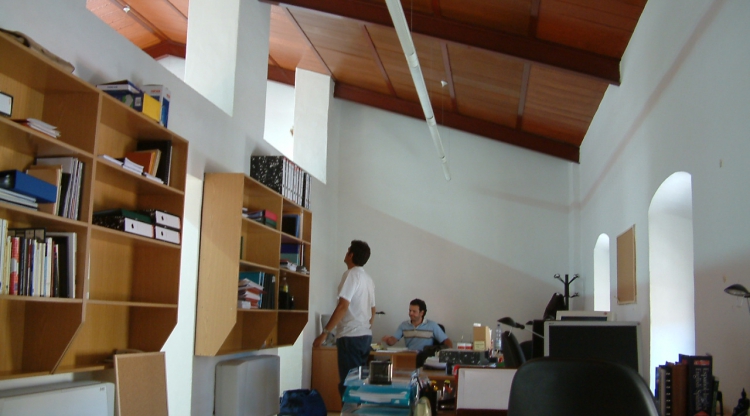Archaeology of urban planning, architecture, landscape and image.
Description: Roman architecture and urbanism. Archaeology of Building: Analysis of the organization of built spaces and their historical significance. We combine the social and ideological value of architecture. We propose a stratigraphic approach to the analysis of Roman buildings traditionally studied from a stylistic approach with the methods of the Archaeology of Architecture School. This methodology is also applied for the protohistoric period.
Territory and applied methodologies: We focus both on historical analysis of successive diachronic landscapes, as in the development of new methodologies for archaeological survey and remote sensing to analyse social and cultural transformations.
Iconography and religious phenomena: We work on issues related to the symbolic and iconographic dimension of Iberian and Mediterranean world; specifically, in the configuration of semantic codes that offer different figurative languages.
Objectives: The IAM comprises several independent research lines. However, they share common methods and objectives:
• Within the Roman world, we will deepen in the technological and productive process that links the monuments to the city through the urbanization of space, taking into account the ideological and symbolic factors. For this we have coordinated research projects in different areas of the Mediterranean.
• We have opened another research line: "Archaeology of Construction" that in addition to deepen the technological processes, is closely linked to an International Working Group led by the IAM whose main objective is to study the technology and building processes in the Roman world, their management and the organization of the resulting economic system.
• Addressing the historical process of visual representations to understand diachrony and their archaeological contexts; one of the objectives is to analyse the representations of power and its legitimacy through the heroic memory and its expression through religious manifestations for comparative studies between protohistoric cultures of the Iberian Peninsula and other contemporary Mediterranean civilizations, culminating in the integration process of the Iberian culture in the Roman Empire; for this purpose a perspective close to semiotics and historical anthropology is adopted. One objective will be to coordinate a Lexicon of Iron Age Iberian Iconography.
• The territorial line of research diachronically covers from Prehistory to the Late Ancient world. Its main objective is to identify patterns and material structures that bring us closer to the succession of human landscapes, with a great emphasis on non-destructive techniques: Aerial Archaeology, remote sensing, geophysical and surface survey. We promote experimentation and innovation to stimulate their progress. The structural framework of praxis in the whole program is based on a critical and rigorous use of geospatial technologies.
• Another common objective is to analyse the human traces of successive societies in the territory according to our knowledge on different mechanisms of social, symbolic and subsistencial type.
• Also especially develop Digital Archaeology, which includes various techniques as the ontological modelling, computational and aerial photography or terrestrial and digital photogrammetry. It is intended to have a strong component of innovation through the use of free software, to develop analysis techniques not implemented in proprietary software (ability to implement algorithms, develop specific workflows, etc)
• Another common objective of the Group is the historiographical analysis, a line of research in which we have been working since the beginning of the Institute.
• Promote collaboration with other institutions; it is essential to continue the AU with the UAM, that comprises the whole Group, to develop projects for the different research lines; and to further develop teaching, both through Postgraduate courses of the CSIC or through agreements with south American universities, which continue carrying out projects in several areas of archaeological heritage.
• Our ultimate objective for the future will be to apply for a European action that could diachronically comprise our lines of research developed at the IAM.


